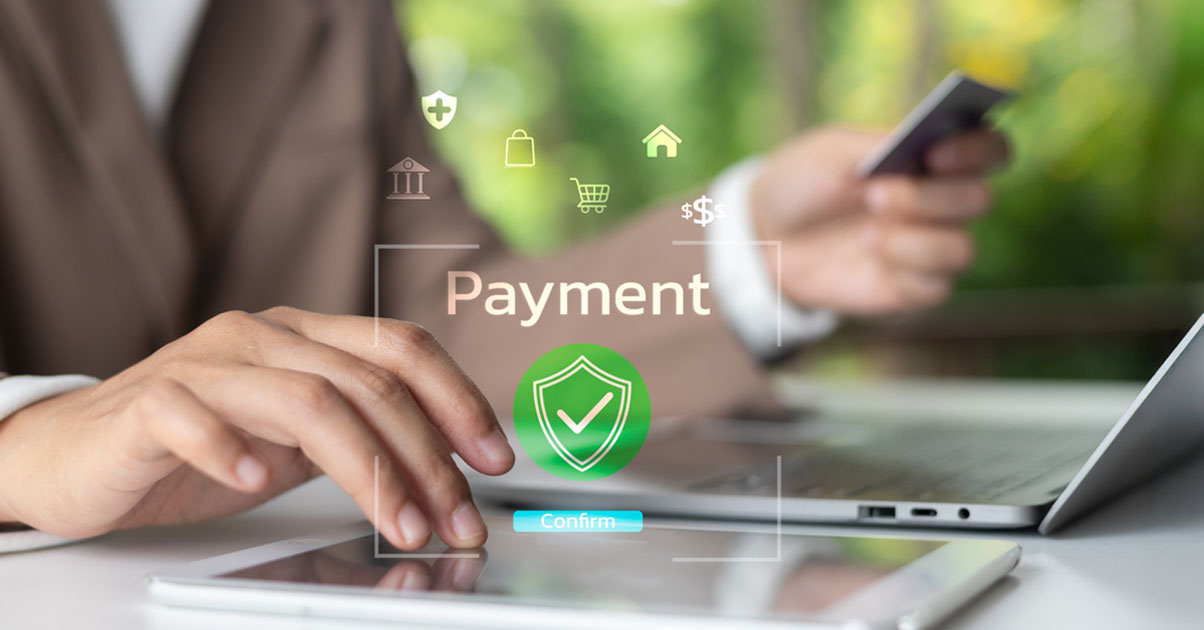Crafting a Secure, Efficient Payables Plan
From a recent Associated Bank webinar with Elan Financial and PaperTrl: Explore B2B payment methods, compare traditional and digital options, as well as security and implementation strategies to optimize payables and boost efficiency.

In June 2025, Associated Bank partnered with Elan Financial Services and PaperTrl to host a webinar about navigating B2B payment solutions. The insights from this session highlight key differences between payment methods, focusing on the benefits of emerging digital options, as well as how to implement new solutions at your business.
The current payments landscape in the United States
“Because we as consumers now spend so little cash and exchange very few paper checks, the core assumption for most folks is that checks are a thing of the past,” remarked Steve Weber of PaperTrl. As it turns out, this is not necessarily the case.
Data from the Federal Reserve shows that, by dollar value, check payments have been steady since 2010, and ACH payments have taken the top position. However, measured by transaction count, check usage has indeed declined and been replaced by cards.
Businesses, not consumers, are the ones still paying by paper check. Why? Some like the tradition and feeling of control they associate with an owner physically signing and mailing each check. Paper checks have an image of reliability, regardless of actual security concerns. And in some cases, a business might be interested in other payment methods but finds the transition challenging because of costs and existing processes.
Vulnerability of traditional payment methods
Payment security should be an important part of any payables plan. Start by comparing how effectively different options protect your data and allow you to exert control over the amount and moment of a debit.
When considering traditional payment methods (cash, plastic credit cards, wires, ACH and check), none is perfectly invulnerable to potential security issues. Checks are the worst among the group in terms of security, since your financial information must be shared with other parties and you have little protection after a fraud incident. Plastic credit cards offer the least control over the time and amount of a debit.
For any of these payment methods to be effective for your organization, take appropriate fraud prevention measures, such as enabling positive pay services.
Emerging digital payment solutions to consider
There are numerous digital payables options on the market that offer greater security, more control and lower cost per transaction than traditional methods.
- Virtual Cards: This system generates a card number and sends it securely to the merchant, who runs it like any other card transaction. These offer the same benefits as card programs (float, fraud protection, rebates, etc.) and greatly reduce the likelihood of fraud.
- FedNow/RTP: These are like a 24/7/365 version of ACH, but there are limitations. There isn’t widespread adoption yet, they can’t be used for debits and there is no recourse for erroneous payments.
- P2P: Platforms like Venmo are popular in the consumer space because they’re a convenient way to share money quickly between friends. However, these platforms aggregate and expose sensitive financial data, and there are known scammer issues. For now, it’s best to avoid these as a B2B solution—save them for splitting the bill at your post-work happy hour.
One of the newest, most secure options is a type of virtual card called straight-through processing (STP), which stays on the same payment rail throughout the payment process, limiting your data exposure. P2P is the only emerging digital method that fares worse than traditional payment options in terms of security and control.
Implementing digital payment options can upgrade your current payables setup, and these methods can work in tandem with traditional methods.
Getting started: Options for implementing digital payment solutions
There are various implementation options available to businesses which cover varying portions of the procurement cycle.
- Integrated payables: This solution focuses on simply paying vendors and can be implemented with nearly any ERP, making it ideal for companies with large payment volumes and/or proprietary ERPs. (Implementation time: 2–4 weeks)
- AP automation: In addition to payments, AP automation includes invoice processing capabilities. That makes it ideal for companies with distributed approval responsibilities, such as consulting and engineering firms. (Implementation time: 6–12 weeks)
- Procure-to-pay: As the name implies, this solution is involved in the entire procurement process, from purchasing through payment. It’s best for organizations with compliance requirements like government and nonprofit entities. (Implementation time: 6–9 months)
The simplest way to get started is with a vendor analysis, which Associated Bank can help you with. This involves looking at your current vendor payments and identifying opportunities for cost savings, efficiencies, better payment terms and more.
Rethink your payment strategy with Associated Bank
Associated Bank’s Treasury Management team can help your organization create a more efficient and secure payables process. Email Treasury@AssociatedBank.com to learn more or request a vendor analysis.
Associated Bank does not charge a fee to download our digital applications; however, transactional fees may apply. Carrier message and data rates may apply, check your carrier’s plan for details. Visit AssociatedBank.com/disclosures for Terms and Conditions for your service. (1406)





